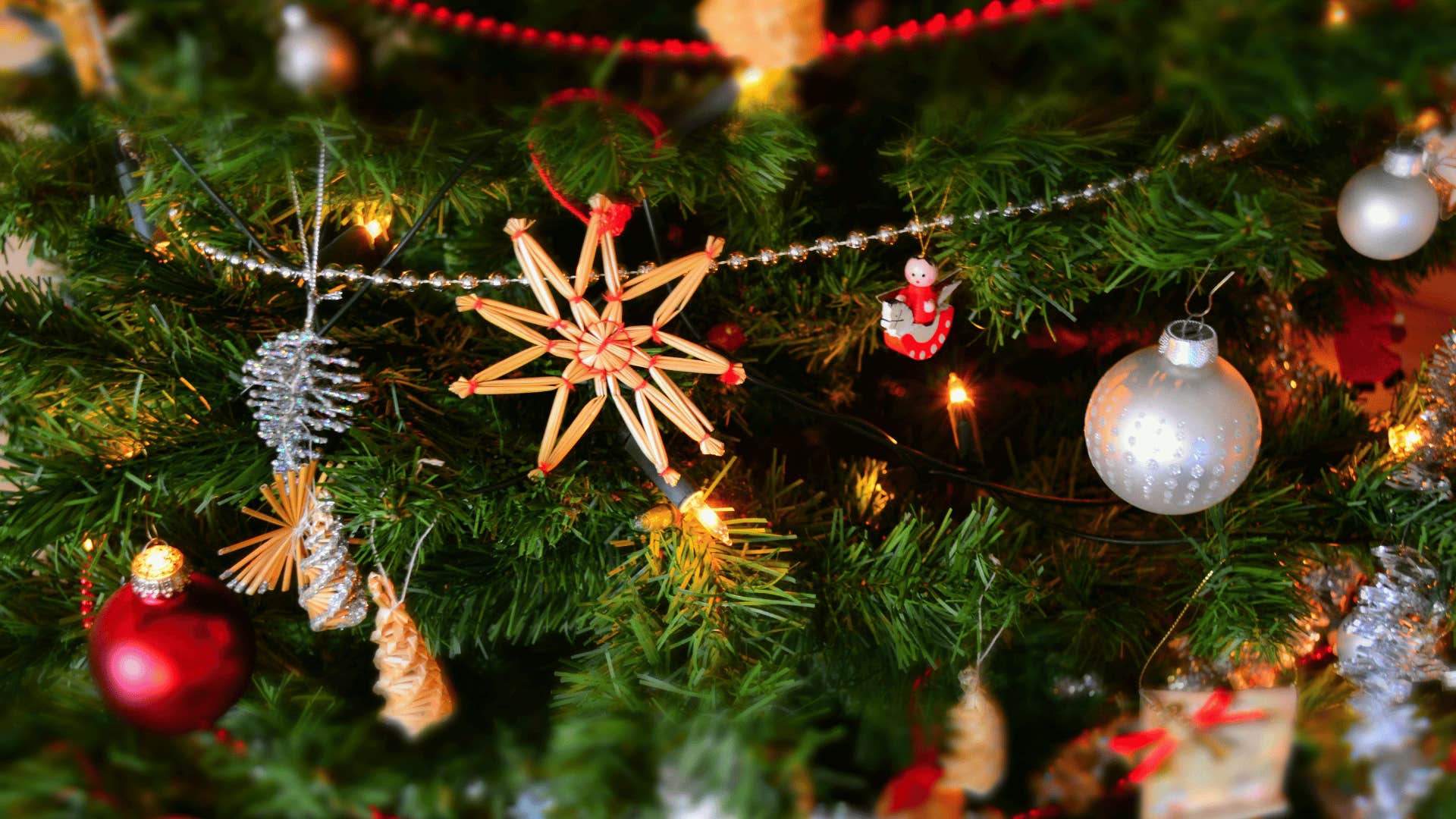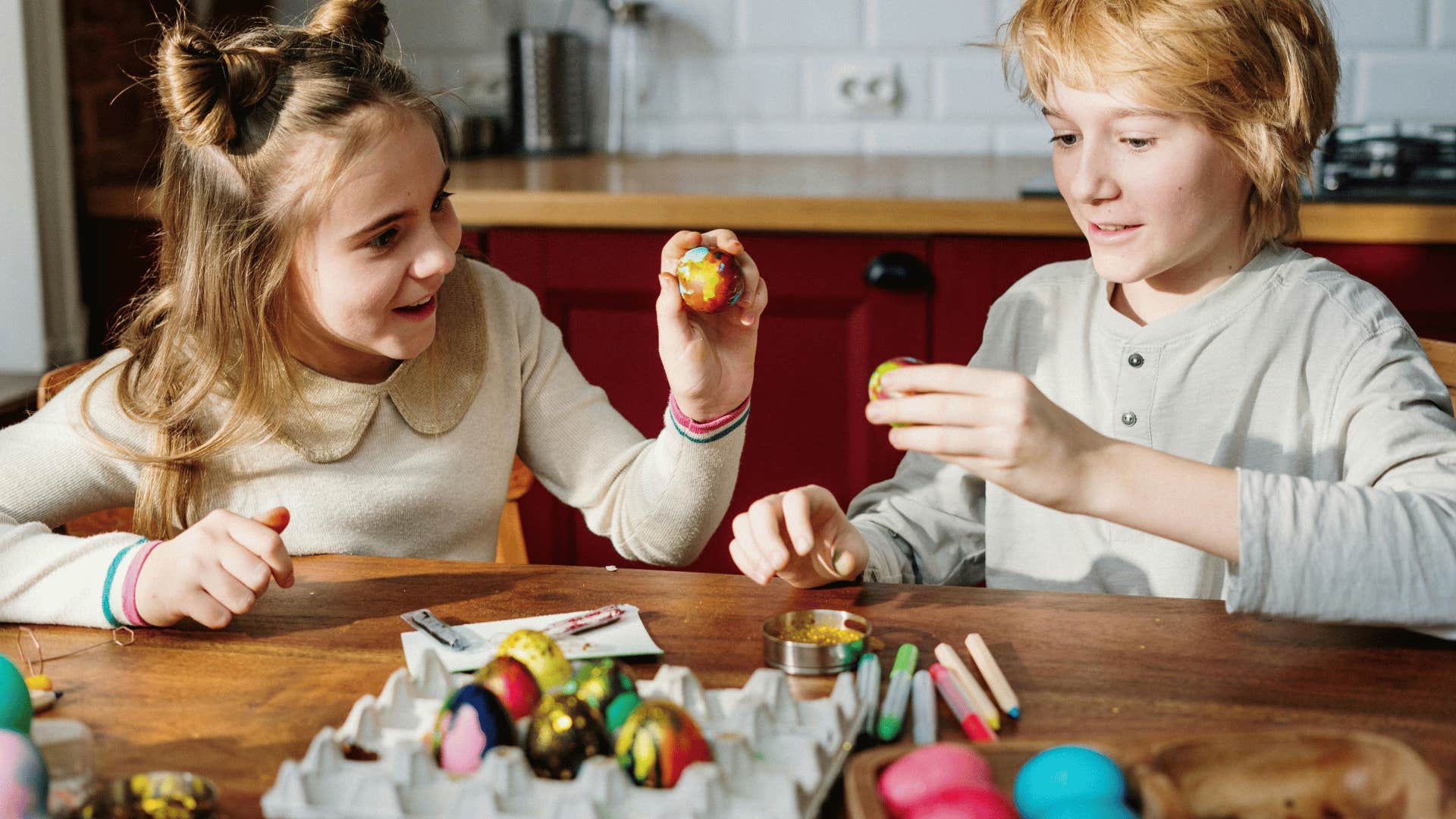9 Childhood Traditions Most People Don't Realize Are Pagan
The Pagan history behind your favorite holidays and traditions.
 Natália Oliveira | Pexels
Natália Oliveira | Pexels Paganism refers to ancient, polytheistic spiritual beliefs rooted in nature. When Christianity spread across Europe, the Crusaders attempted to stomp out pagan traditions.
But the long-practiced customs of the people would not die out. People continued their pagan practices, and the Crusaders simply rebranded them to have a semblance of Christian conformity. Many of these traditions live on to this day under the guise of Christianity or superstition.
Here are nine traditions from our childhood that most people don't realize are Pagan:
1. Halloween
 Yaroslav Shuraev / Pexels
Yaroslav Shuraev / Pexels
Halloween comes from Celtic pagan roots. The original holiday was called Samhain (sah-win), marking the end of summer and the beginning of winter. Samhain was a day that celebrates spirits and the dead as year and vegetation begin to die.
This season was thought to allow spirits to cross into the physical realm, so pagans would have bonfires to communicate with these spirits through ashes or roasting nuts.
Dressing up in costume was meant to resemble the evil spirits so that they would think you were one of them and not bother you.
Christians adopted this holiday and renamed it All Hallows Eve to remember their deceased saints and martyrs.
2. The days of the week
 Pixabay / Pexels
Pixabay / Pexels
In many languages, the days of the week are named after gods and celestial bodies. In English, the day name origins come from the Anglo-Saxons, the Germanic, and the Norse.
Monday stems from the Anglo-Saxon word “monandaeg” which translates to “moon’s day” celebrating the moon — much like the French “lundi” or Spanish “lunes” relating to luna.
Wednesday, Thursday, and Friday all come from Norse gods. Odin, or Woden, became Wednesday, Thor turned into Thursday, and Freya is Friday. Tuesday’s god is Germanic Tiu, the god of war. Again, Christians attempted to rename the days of the week after their saints, but the pagan names stuck.
3. Birthday candles
 Ivan Samkov / Pexels
Ivan Samkov / Pexels
Pagan markings of the year generally centered around solstices, and personally around birthdays. Much like during solstices, birthdays are a time that brings out spirits, but with a target on the birthday boy or girl.
To ward off evil spirits and beckon upon the good spirits, candles were placed on a cake. One candle for each year the person has been alive and an additional candle in hopes of another healthy year.
Today we still put candles on birthday cakes out of blind tradition, the fun of fire, and indulgence in cake. Don’t forget about the spiritual origins, maybe you’ll count the candles more carefully.
4. Knocking on wood
 magico110 / Pexels
magico110 / Pexels
Pagan spirituality is strongly tied to nature. Spirits were thought to live in trees. Knocking on wood was to provoke the attention of good spirits when in need of their assistance and protection, or to shoo away evil spirits with the ruckus so they don’t overhear your secrets or worries.
The meaning of this tradition is probably the one that has held up the strongest through time. When we knock on wood today, it is to ward off bad luck.
With many of these other practices, the ritual stays consistent, but the spiritual significance has gone ignored.
5. Kissing under the mistletoe
 Lum3n / Pexels
Lum3n / Pexels
In Norse mythology, Frigga, the goddess of love, beauty, and fertility, wept after her son Balder was killed by a mistletoe arrow. Frigga’s tears turned the red berries white and resurrected her lost son, bestowing vitality and love connotations to this plant.
Also, Druids used to cut mistletoe with a sickle during the first new moon after the winter solstice. Sprigs of mistletoe were to be hung in doorways as a means of protection from evil spirits.
Additionally, mistletoe was thought to contain the sperm of the gods because of the white substance from the mistletoe berries. Mistletoe was considered an aphrodisiac and fertility treatment. Be careful who you kiss under that mistletoe, you might end up bonded for life.
6. Wedding emblems
 Stephen Andrews / Pexels
Stephen Andrews / Pexels
These are a couple more pagan practices that were created to ward off evil spirits. During wedding ceremonies, people feared that evil spirits would take the bride. So, she wore a veil to hide from these spirits, and the bouquet was supposed to mask her human smell from them.
On an even creepier note, pagan bridesmaids would also wear wedding dresses identical to the bride. The bridesmaids existed to act as bait for the evil spirits, confusing them so they wouldn’t know which maiden to steal, or steal the wrong one.
It was much more bleak than exciting to be asked to stand in a wedding back then. Even the placement of wedding rings has pagan meaning. It was common for the exchanging of rings to signify the sealing of a deal.
In weddings, the rings would be placed on the fourth finger of the left hand because it was thought to contain a vein connected to the heart. There’s a much more romantic pagan tradition for you!
7. Christmas occurring on December 25
 Gary Spears / Pexels
Gary Spears / Pexels
In the bible, a date for Jesus’ birth is actually not given. The Christians landed on December 25th for their holiday to try to overrule the Roman pagan holiday, Saturnalia.
Saturnalia was a celebration of the god of the harvest, Saturn. Taking place roughly around the winter solstice, Saturnalia was meant to beckon Saturn to bring life back to the world while the pagans suffer through winter.
The winter solstice marks the shortest day in the year, so after the solstice, the sun begins to climb higher in the sky again and spring will gradually return. Feasts and merriment were to honor Saturn and invite him back to Earth.
8. Covering your mouth when you yawn
 cottonbro studio / Pexels
cottonbro studio / Pexels
This tradition doesn’t even seem like a tradition, more of a polite reflex. But the pagan attachment to covering your mouth when you yawn is very dark.
Again, pagans are terrified of evil spirits stealing their souls. Blocking your mouth when you yawn was supposed to keep evil spirits from taking your life force right out of your throat.
Pagans noticed the high infant mortality and connected it to the fact that babies don’t cover their mouths when they yawn.
9. Easter eggs
 cottonbro studio / Pexels
cottonbro studio / Pexels
Easter closely aligns with the Spring equinox. Germanic pagans would celebrate the goddess of Spring, Eostre. Eostre symbolized fertility as the world blooms again and animal mating season ensues.
Eostre was also thought to bring colorful eggs as presents for the Spring celebration, thus creating the Easter egg.
This is another holiday Christians tried to dominate by adding their own stories and meaning at the same time so that people would celebrate their holiday over the pagan one. While the Christian connotations did dominate, many of the practices remained pagan.
Colleen Fogarty is a writer and contributor to YourTango. She covers self-care, astrology, lifestyle, and relationship topics.

